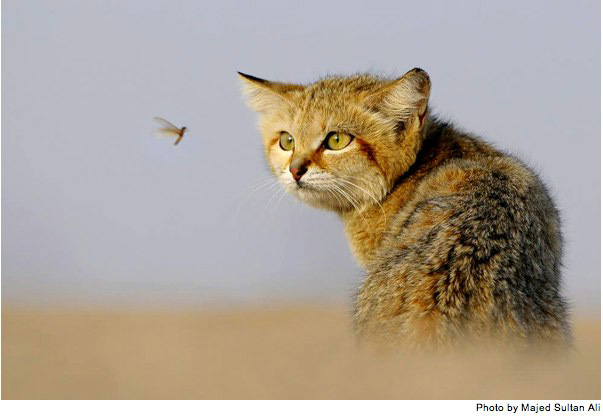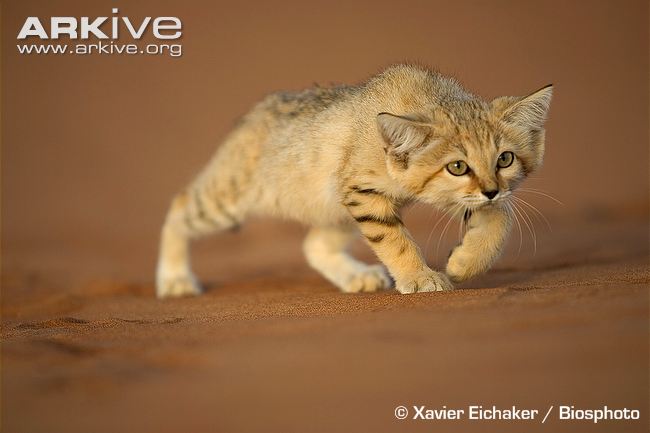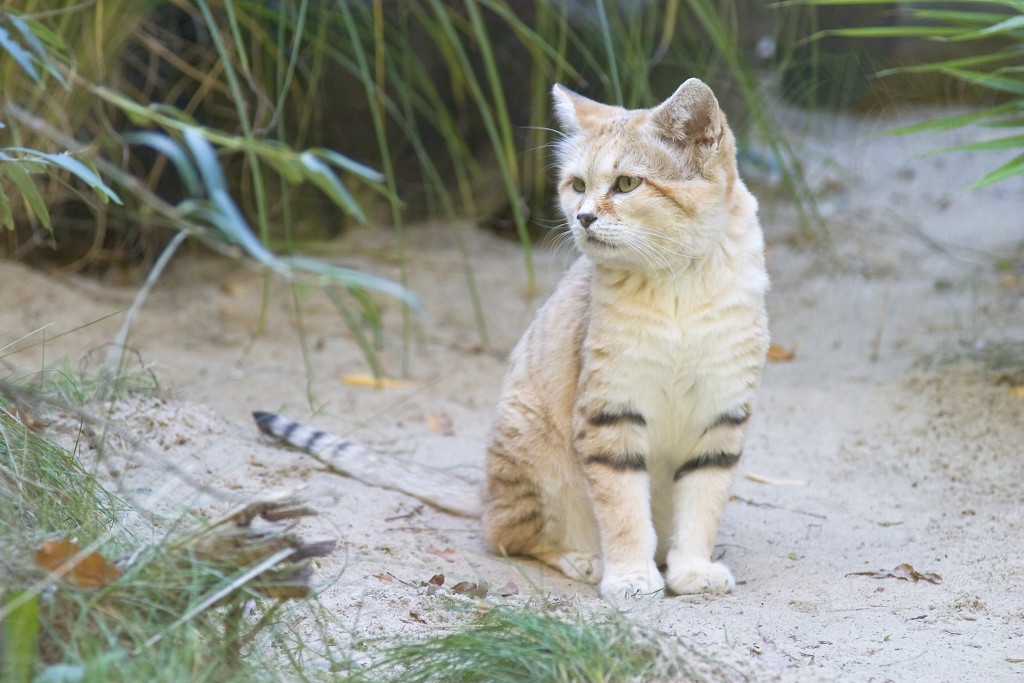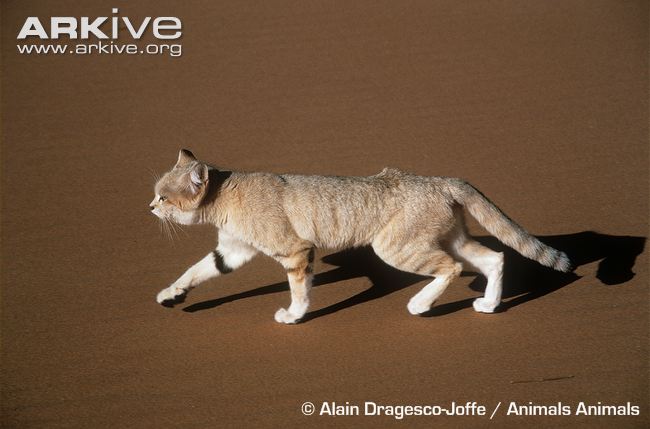The Sand Cat
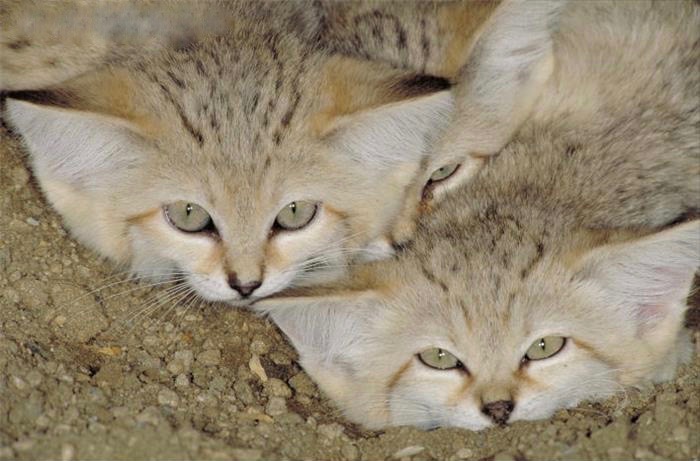
Sand Cat
Kingdom: Animalia
Phylum: Cordata
Class: Mammalia
Order: Carnivora
Family: Felidae
Subfamily: Felinae
Genus: Felis
Species: Felis margarita
Sand Cat Conservation Status: http://www.iucnredlist.org/details/8541/0
The Sand Cat is one of the more difficult cats to study in the wild. It lives in some of the gnarliest desert conditions on the planet. Their feet are covered with a thick layer of wiry black hair, which insulates their footpads against extreme heat and cold. These foot coverings allow them to walk on sand without sinking, leaving their footprints nearly invisible. Sand Cats are crafty and wily too, and have learned to crouch down and shut their eyes when a light is shone on them so they can’t be tracked and hunted.
The Sand Cat is a tiny wild cat; they only weigh 1.8-3.6 kg (4-8 lbs) and reach heights of 25-31 cm (10-12 in). Their pale buff beige fur exactly matches the sandy rocky desert; they completely blend in. Sand Cats also bury all their scat so trying to find them is difficult. They are found in the Sahara, throughout the Middle East, and in Turkestan. They live 9-10 years, possibly longer.
Sand Cats lead a solitary existence; so they can find each other for mating purposes across the vast expanses of desert, they evolved an odd and loud mating call that sounds like the barking of a small dog. They are prodigious diggers and their diet consists mainly of three species of desert gerbil who live in underground tunnels. Sand Cats also can be fiercesome snake hunters, which they bite quickly in the head. Sand Cats will bury their kills in the sand and return later for leftovers.
This is one of the only cats who doesn’t face habitat degradation since it lives in some of the harshest deserts of the world. Some hold a religious belief that the Sand Cat is a companion to the Prophet Mohammad so they are not hunted as livestock raiders even when they do steal some chickens.
More wild cats here

